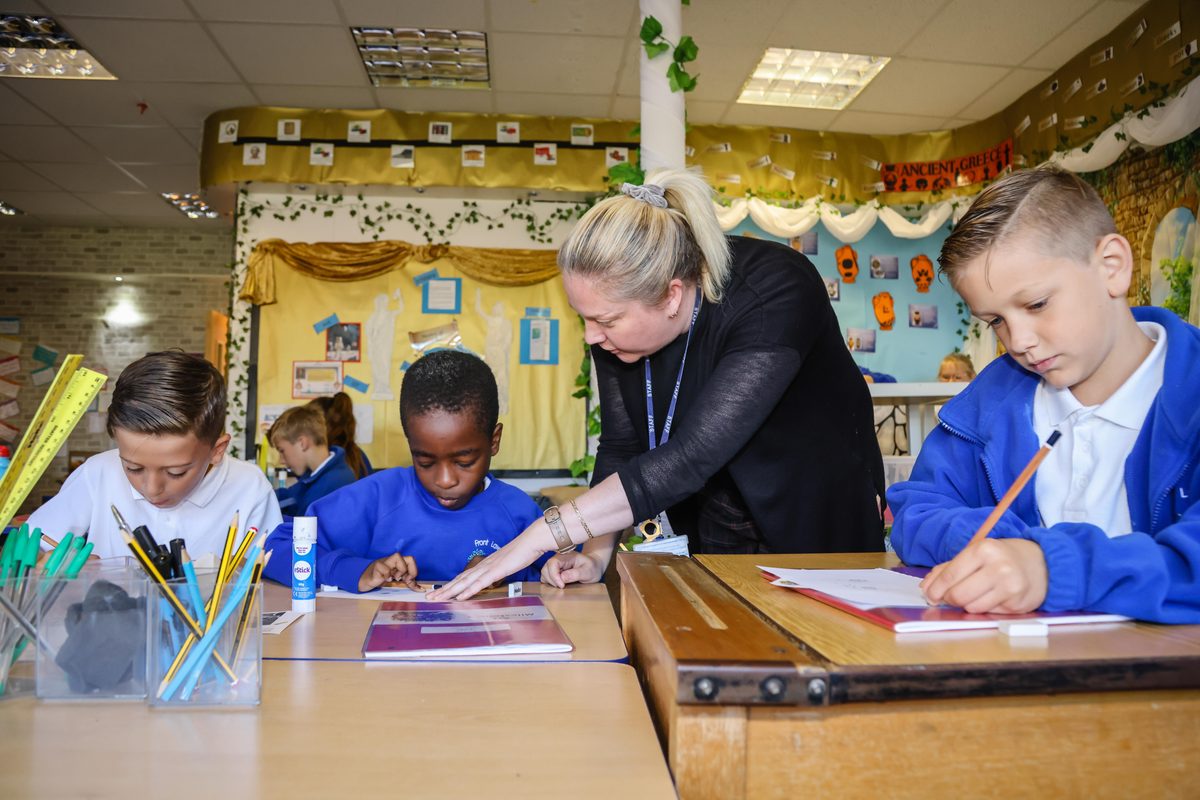
Blog -
Manipulatives On The Brain. Look in any early years classroom and you’ll see a wealth of manipulatives in every lesson…
…but as we move up through the school we often see them used less and less.

Share on:

by Hampshire Research School at Front Lawn Primary
on the
All aboard, not all at sea – How to support writing through modelling
Teaching writing is like guiding a ship through the sea of words, and modelling is like being the captain who charts the course. Whether it’s creating characters or telling a story, teachers are the ones who demonstrate how to mix creativity with structure and sentence construction. This blog is all about why modelling the writing process and planning in extended practice is key to developing good writers; who not only achieve the expected attainment at the end of primary school but are equipped with the vital skill of being a writer.

In the context of a primary classroom, the use of modelling is integral. Acknowledging that expecting children to dive into writing without any input is like setting sail without a compass. Modelling within the primary classroom goes beyond just showcasing the end result; it’s a window into the entire process. Teachers not only demonstrate the art of crafting sentences but also illuminate the intricacies of spelling, handwriting, sentence structure, and the nuances of grammar. In its simplest form, Riches (2019) describes modelling as the process of‘seeing before doing and therefore minimising the ambiguity around the outcome.’ At Front Lawn Primary Academy, we believe that children embed these skills more deeply when they are not taught in isolation. More information on the importance of modelling can be found here, in the EEF Key Stage 1 and the Key Stage 2 Literacy Guidance Report.

Modelling isn’t confined to the mechanics of writing alone. Teachers skillfully show how to create banks of ideas, empowering young writers with an abundance of inspiration to draw from. This not only fuels creativity but equips pupils with the tools to overcome the dreaded writer’s block. With our Pupil Premium at 75%, modelling acts as a scaffold for all children but particularly those who lack the life experiences that contribute to effective writing.
Beyond the basics, modelling also extends into editing and improvement, creating a safe space for children to understand that making mistakes is not only okay but an integral part of the learning journey. Through this process, pupils gain insights into how to identify errors, make revisions, and refine their work, fostering a growth mindset and a sense of resilience in the face of challenges. Within our context, it is customary for teachers to model the process of making a mistake and how they react to this. For example, children are taught to “never dodge a good word”. The teacher or TA will model dotting or underlining a word they are unsure of how to spell therefore making the classroom a safe space for children to use adventurous vocabulary regardless of their ability to spell it.

Modelling is used as an opportunity to expose children to adventurous vocabulary that sparks their imagination. There is a clear link between socio-economic disadvantage and children having a poorer vocabulary when they start school. People often refer to Hart and Risley’s study, “The Thirty Million Word Gap” (2003), to back up the idea that how many words children hear at home relates to how many words they know when they start Reception. With this in mind, it is imperative for schools with a high % of Pupil Premium children, like Front Lawn, to ensure we plan and expose all children to a wide range of adventurous vocabulary; therefore increasing their chances of success in school and in life. To learn more about the importance of teaching and modelling vocabulary read EEF Vocabulary strategies


Blog -
…but as we move up through the school we often see them used less and less.

Blog -
When is it all just too much?

Blog -
Putting research evidence to work
This website collects a number of cookies from its users for improving your overall experience of the site.Read more